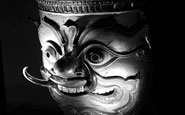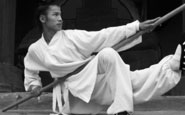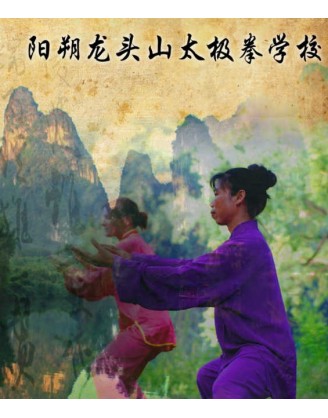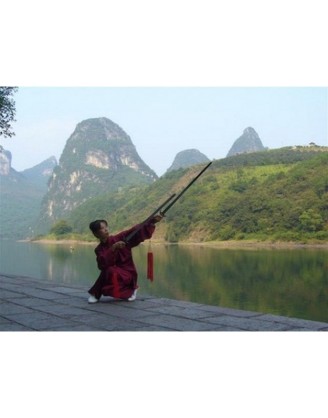Long Tou Shan Tai Chi School
Showing 1 to 1 of 1 (1 Pages)
Long Tou Shan Tai Chi School
|
Welcome to Long Tou Shan Tai Chi School!
We hope you will join us and feel the deep satisfaction of learning traditional Chinese martial arts at our school.
Long Tou Shan Tai Chi School, located in the legendary beauty spot of Yangshuo in southern China, was founded in 2006 as a place for students to practice and develop a greater appreciation of Tai Chi (taijiquan in Mandarin) and Qigong, improve their health and well-being while enjoying the special beauty and tradition of south China and the famed Li and Yulong. Rivers scenic area. The school was founded by Master Luo Mei Juan (known as Mei), a 7th Duan Master of the Chinese Wushu Association, and now also features instruction by Master Zhou Da Zhu (Mei’s son, carrying on the family tradition).
Long Tou Shan Tai Chi School offers:
Certified masters with many years of experience both teaching and practicing Tai Chi (both Chen and Yang styles) for fluidity, balance and coordination Qigong for energy flow, relaxation and rooting
Emphasis on both the health and well-being aspects of Tai Chi are offered alongside the practice of the martial arts applications.
Comfortable, clean and lovely rooms with hot showers, A/C and free Wi-fi.
Healthy, delicious food, both vegetarian and non-vegetarian.
A beautiful, natural environment surrounded by orchards and overlooking the world-renowned Li River in the heart of traditional China.
A glorious location in the rural countryside, with the town of Yangshuo not far away for those who seek shopping, cafes and bars, and services such as post office and banks. The school welcomes all students and practitioners, no matter what age, physical condition or level of experience.
Tai Chi is both a martial art and a form of meditation. As a system of exercise it is suitable for people of all ages and requires little or no special equipment. It will help you improve your physical health, it can give you skills in self defence and will teach you how to relax.
what_is_qigong_tai_chi_lotusgardenTai Chi is an ancient practice that has a history going back hundreds of years. You will recognise it as a form of internal martial art that focuses on slow movements linked to deep breathing, that uses the opponents force to neutralise their attack. It draws on traditions such as the external martial arts of Shaolin Kung Fu, the healing movements of Qi Gong and the philosophical meditations of Taoist philosophy. However instead of cultivating strength and speed like most martial arts, Tai Chi emphases the blending of hard and soft, fast and slow, Yin and Yang. The basic movements of Tai Chi are performed with a soft roundness and a constant opening and closing of the body. This combined with the focused presence of the mind, stimulates the circulation Qi or internal energy. With this comes quietness, relaxation, flexibility, co-ordination and awareness. Its philosophy can perhaps be best understood as ”the weak overcomes the strong” rather like the way in which water overcomes rocks in a river. This is the kind of fluidity that we try to cultivate in Tai Chi.
When we practice Tai Chi we seek to achieve a state of ‘Non Doing’, not a static state. On the contrary, it’s the ability of ‘Non Resisting’, we move with the force affecting us in the same way that the highest leaf of a tree is able to move with the slightest breeze. This is the virtue that Tai Chi practitioners call ‘Qing Ling’, of being light and alert. If one doesn’t resist, there can’t be any struggle. If one doesn’t use force, there is no opposition. If there is no struggle, one is able to relax, both mentally and physically. Being relaxed and quiet, one’s vision becomes clearer and you become able to adapt to circumstances and wait for them to change. In Tai Chi its is often said that the first opponent is therefore oneself.
Qi Gong uses a series of postures, and movements linked with deep breathing as a meditative technique. The student learns to be aware of the inner workings of their own body and learns to restore a healthy balanced feeling of being. Even half-hour an hour each day will bring to you the dividends of better health, increased vitality, and peaceful alertness.
In an ancient story, a great flood covered much of China and its stagnant waters produced widespread disease. The legendary shaman-emperor Yu cleared the land and diverted the waters into rivers by dancing a bear dance and invoking the mystical power of the Big Dipper Constellation. As the waters subsided, people reasoned that movement and exercise can similarly cause the internal rivers to flow more smoothly, clearing the meridians of obstructions to health. For Taoists Qi Gong is the ideal way to realise their goal of ‘wuji’, an empty, alert, boundless state of consciousness. The harmony of Yin and Yang: inside and outside, earthly and spiritual, stillness and activity. Spirit and body cultivated in balance.
Qi Gong is a preventive and self-healing aspect of Chinese medicine and is animalstill used today, to teach patients how to improve their own health. A major early text on Qi Gong, the ‘Dao-yin Tu’ (168 B.C.) contains illustrations of forty-four Qi Gong postures prescribed by ancient Chinese doctors to cure specific ailments. One of the founding father of Chinese medicine, Hua Tuo (second century A.D.) was also one of the great early Qi Gong masters. His “Five Animal Frolics” imitate the movements of the Crane, Bear, Monkey, Deer, and Tiger and are still practiced today. Hua Tuo said that: “just as a door hinge will not rust if it is used, so the body will attain health by gently moving and exercising all of the limbs”. Qigong is practiced by more than 80 million Chinese people and probably by tens of thousands in the United States and Europe. Its practice will improve performance in the martial arts or any sport. It will bring you health, harmony and balance. Qi Gong techniques are suitable for male or female, young or old, fit or disabled. Though there are many styles of Qi Gong all are based on similar principles: relaxed, rooted posture; straight, supple spine; diaphragmatic respiration (breathing into the abdomen, expanding on inhalation, retracting on exhalation); fluid movements without excess effort; and tranquil awareness.
Long Tou Shan Tai Chi School, Chao Long Village, Yangshuo Town, Guangxi Province, China
|





